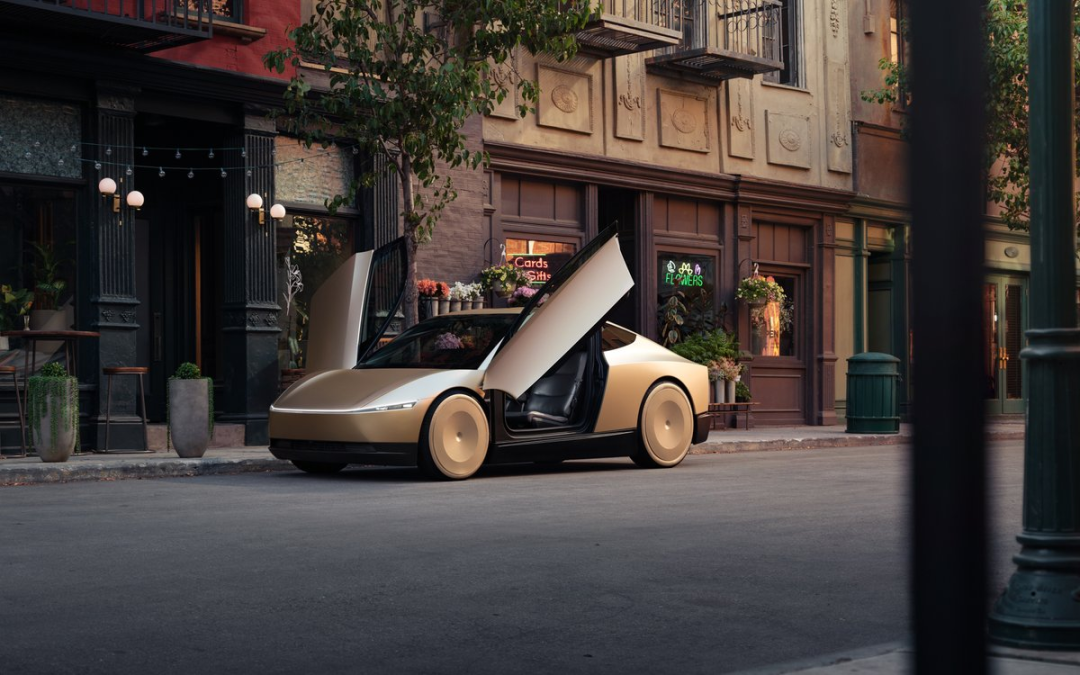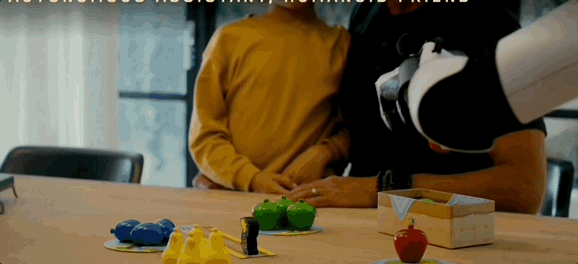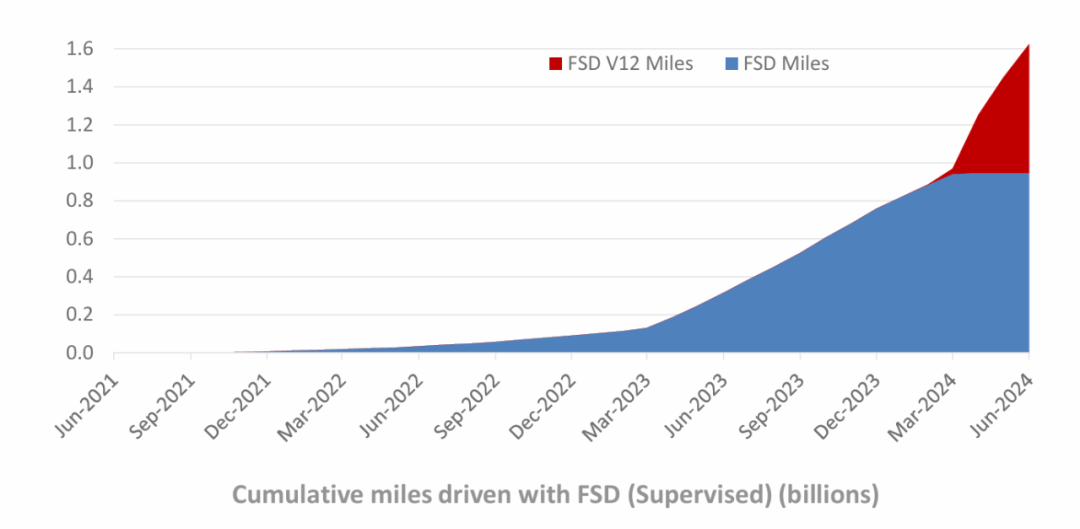Is Musk's "surprise" enough?
![]() 10/14 2024
10/14 2024
![]() 626
626
"We have to go all in"
On October 11, Beijing time, Tesla's "WE, ROBOT" event finally kicked off after nearly an hour's delay. However, the entire event lasted just over half an hour before abruptly ending.
This left fans somewhat bewildered. After all, Musk had boasted on social media half a month earlier, "this will be one for the history books," teasing fans' appetites to the fullest.
Tesla did bring plenty of surprises. For instance, the Cybercab autonomous taxi and Robovan autonomous van unveiled at the event both dispense with steering wheels and pedals, rendering human driving impossible. Tesla's advancements in autonomous driving and the Optimus humanoid robot are equally remarkable. In Musk's vision, Tesla's Robotaxi will eventually serve as a revenue generator for car owners.
However, the Cybercab's projected mass production date of 2027 or earlier has left some outsiders feeling that Musk is once again "painting a pie in the sky." Since Musk announced Robotaxi Day in April, Tesla's share price has risen by roughly 50%. Nevertheless, after the event concluded, Tesla's share price initially surged before falling. At market close on October 10, US Eastern Time, Tesla shares were trading at $238.77, a slight decline of 0.95%.
The Planned "Ultimate Simplification"
The Tesla Cybercab differs fundamentally from conventional autonomous taxis currently available on the market.
Common autonomous taxis on the streets are often modified versions of mass-produced vehicles, often equipped with massive lidar sensors and various cameras. In contrast, the Cybercab boasts a clean exterior that hardly suggests its autonomous capabilities. Not only are radar sensors and cameras difficult to spot on the vehicle's exterior, but the interior is equally uncluttered—steering wheel and pedals absent.

Image Source: Tesla
Designed specifically for autonomous driving, this vehicle seems more in line with the future of intelligent driving. Tesla is integrating wireless charging into the Cybercab, meaning that charging will be as effortless as placing a phone on a charging pad. Musk revealed that the Cybercab will enter mass production by 2027, priced at no more than $30,000.
It's no surprise that the Cybercab boasts a distinctive appearance. In the Robotaxi chapter of "Elon Musk: Tesla, SpaceX, and the Quest for a Fantastic Future," it's written:
Musk fell into a state of profound indifference, saying slowly, "Let me be clear, this car must be designed as a clean, sleek Robotaxi. We must take this risk. If we mess up, it's my fault. But let's not create a half-assed vehicle. When it comes to autonomous driving, we have to go all in."
From a product perspective, this event merely advanced Musk's established goals and plans. As early as 2016, in his "Master Plan, Part Deux," Musk had already designated Robotaxi as a set goal for Tesla's development. In other words, the successful launch of Tesla Robotaxi would fulfill the objectives outlined in Musk's 2016 "Master Plan, Part Deux."
Morgan Stanley analyst Adam Jonas believes that the unveiling of the Robotaxi could be the first step in Tesla's transformation of its core business. In his view, the electric vehicle market is highly competitive with slim margins, making traditional production and sales increasingly challenging. He notes that while Tesla has surpassed its "iPhone moment" with the Model 3 and Model Y, it has yet to reach its "App Store moment," which signifies high profits, high P/E multiples, and recurring revenue streams.

Image Source: Tesla
Not only did the event showcase the Robotaxi, but it also introduced the Robovan. The Robovan is an autonomous van capable of carrying up to 20 passengers. Tesla claims that the Robovan boasts low operating costs, at approximately 10-15 cents per mile (roughly RMB 0.71-1.1 per km), significantly reducing transportation costs for passengers and goods while mitigating environmental pollution.

Image Source: Tesla
Furthermore, the Tesla Optimus humanoid robot demonstrated at the event appeared far more agile than its predecessor two years ago, not only capable of fetching objects but also interacting with the audience in a more human-like manner. The cost of mass-producing the Tesla Optimus humanoid robot is estimated at $20,000 to $30,000. Musk stated, "Tesla's humanoid robot has been continually upgraded and optimized over the years. In the future, it could help you walk your dog or pick up your kids from school. I believe that all 8 billion people on Earth will be interested in it."
Revolutionizing Transportation and Unleashing the Imagination
The greater significance of this event lies in Musk's reiteration of his commitment to revolutionizing future transportation.
In 2016, Musk envisioned a bright future for Tesla owners: when not in use, their cars could autonomously drive to earn money. According to Musk's vision, "Tesla will share revenue with customers. Imagine operating a fleet like Airbnb."
Musk noted that out of 168 hours in a week, the average car is only used for roughly 10 hours, spending most of its time parked. If vehicles could drive autonomously, their usage rates could increase by 5 to 10 times.
The prerequisite for realizing this vision is that autonomous vehicles must be ten times safer than human-driven ones. According to Tesla's Q2 2024 Vehicle Safety Report, Tesla's Autopilot system has already made driving 10.3 times safer than conventional driving.
Behind the Robotaxi lies Tesla's Full Self-Driving (FSD) capability. Leveraging end-to-end large model algorithms and powerful computing power, FSD will enable Tesla vehicles to navigate anywhere on Earth without relying on high-precision maps. According to Tesla's roadmap, by 2025, the unsupervised version of FSD will be officially launched in Texas and California.

Image Source: Tesla
In late December 2023, Tesla began rolling out FSD V12, featuring an end-to-end architecture. The rapid iteration of this new architecture has given Musk insight into the path to realizing Robotaxi. After testing FSD V12, Xiaopeng Motors Chairman He Xiaopeng couldn't help but praise it on Weibo, stating, "This year's FSD is completely different from Tesla's previous autonomous driving capabilities. I highly commend it."
Data shows that as of Q2 2024, Tesla's FSD has accumulated over 1.6 billion miles (approximately 2.574 billion kilometers) of driving. As Tesla's fleet size and mileage continue to grow, this training data will only accelerate.
Currently, nearly 7 million Teslas are on the road worldwide. Continuously enhancing FSD's computing power allows these fleets to seamlessly join the Robotaxi service, quickly forming a scale effect.
Musk previously stated his intention to develop high-density urban transportation solutions, and the introduction of the Robovan represents a concrete step towards this strategy, potentially revolutionizing urban transportation.
Perhaps someday in the future, the taxi and bus industries will be disrupted, with autonomous taxis and vans becoming the dominant mode of transportation. Musk believes that the future business model will be intriguing, with today's ride-hailing drivers managing fleets of ten, twenty, or more vehicles, akin to shepherds tending to their flocks. With a fleet of vehicles under your command, you become the "shepherd" of your "herd."
It's worth noting that Musk also mentioned integrating Tesla vehicles into AI ecosystems, akin to Amazon Web Services' capabilities.
Musk explained that if a vehicle drives for 50 hours a week, it still has over 100 hours of idle time that could be leveraged. Combining the computing power of all vehicles would yield substantial resources. Centralizing this power would be invaluable for the future development of autonomous driving and AI.
During April's earnings call, Musk envisioned the possibility of running distributed computing when vehicles are stationary, a theoretically feasible concept. Large computing tasks can be divided into smaller segments, a practice already validated by Bitcoin mining.
This sounds intriguing, as the rapid development of AI poses significant challenges related to energy, computing power, network bandwidth, escalating costs, and even increased carbon emissions.
What Other Challenges Remain?
Despite Musk's vision of endless possibilities, the event failed to elicit enthusiasm from capital markets, with Tesla's share price declining rather than rising on the day.
While Tesla's vision promises to revolutionize future transportation, it remains in the conceptual stage. The Cybercab's projected mass production date is 2027 or earlier, and the timeline for Tesla's Optimus humanoid robot is uncertain. This concerns capital markets, as these new technologies and products may not generate short-term revenue. Moreover, the highly anticipated Model 2, which investors hoped would materialize soon, didn't reveal much information at the event.
From a cost perspective, the market's acceptance of vehicles priced at $20,000 to $30,000 or more remains uncertain. How many people will purchase autonomous vehicles and rent them out when not in use? There is also debate about the disruptive impact of autonomous driving on the taxi, ride-hailing, and bus industries, including concerns about job displacement.
Moreover, the lack of a steering wheel or pedals in the Cybercab would violate federal vehicle safety regulations. Cruise, a subsidiary of General Motors, previously attempted to produce its dedicated robotaxi, Origin, but failed to obtain necessary approvals from the National Highway Traffic Safety Administration, ultimately canceling the project.
Currently, the widespread adoption of autonomous driving remains a complex legal and societal issue. Regulations and standards for autonomous driving vary across countries and regions, and Tesla must engage in ongoing communication and coordination with relevant authorities to secure necessary approvals and permits.
In a letter to shareholders, Tesla acknowledged that it requires federal government approval to deploy more radical Robotaxi designs. Its statement on the matter was vague: "While the timing of Robotaxi deployment depends on technological advancements and regulatory approvals, given its significant potential value, we are actively pursuing this opportunity."








